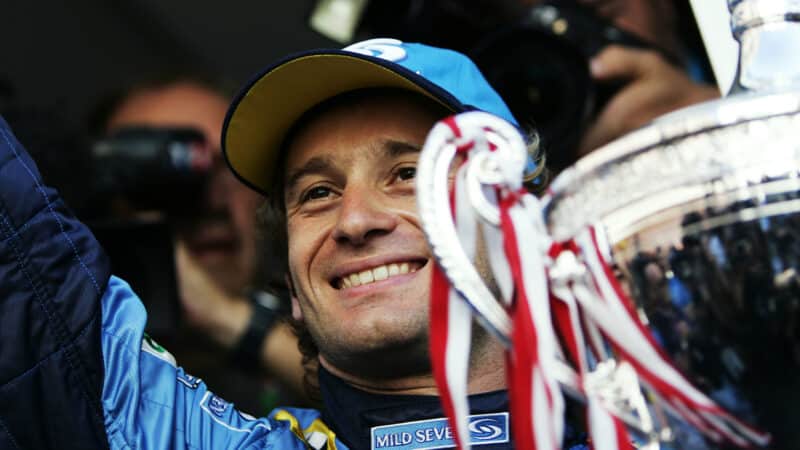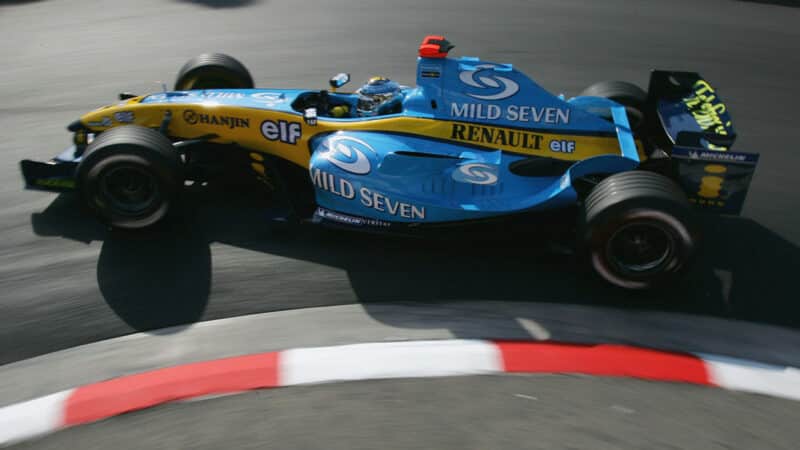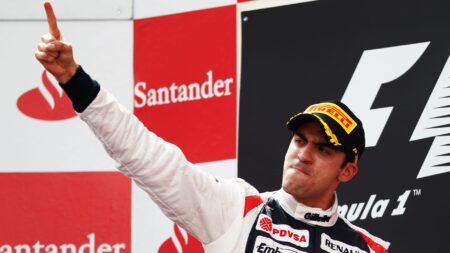Trulli raced in F1 for seven seasons more, scoring two second places and four third places during that time, all of them for Toyota, but he never looked like winning again. Even so, his qualifying performances continued to impress mightily – with the result that in races he often held up the drivers of faster cars whom he had outqualified, and was therefore running ahead of in the early laps. I cannot recall who first coined the term ‘Trulli train’, or when, but it certainly stuck, for, race after race, a long line of cars would be seen following Jarno’s Toyota, their drivers frustrated but unable to get past. There was no DRS in those days, remember.
In 2007 Trulli’s Toyota team-mate was Ralf Schumacher. The United States Grand Prix at Indianapolis was the seventh race of that F1 season, and, although neither driver had been enjoying the Toyota TF107, which was one of the poorer cars fielded by that lavishly funded but ultimately disappointing F1 team, there was no doubt that Jarno had had the upper hand, having outqualified Ralf six times out of six. On behalf of the magazine that I was then editing, I had arranged that a fashion photographer, Matthew Stylianou, would take some funky portrait shots of both Toyota drivers, and the team’s comms/PR guys had suggested that the photoshoot should take place on Saturday afternoon, a couple of hours after qualifying, Ralf first then Jarno.
When Ralf walked into the spare pit garage that we had converted into a temporary photographic studio, having just been outqualified by his team-mate yet again, making the score between them a now embarrassing seven-nil, it was clear that he was not in a good mood. He refused to smile for Stylianou’s Hasselblad, he grimaced, he sighed, and finally he turned to me and demanded that we write positively about him in future, otherwise he would not complete the ’shoot. I am not proud of what happened next, but I was irritated by the condition that Ralf had tried to impose, and I refused it. “I’m sorry, Ralf,” I began, “but I can’t agree to that. I can’t and won’t guarantee you positive coverage simply because you stand still for one of our photographers for a few minutes.” He pressed his point. I countered it. Finally, I snapped, and I swore at him. He turned on his heel and left. Photoshoot aborted.
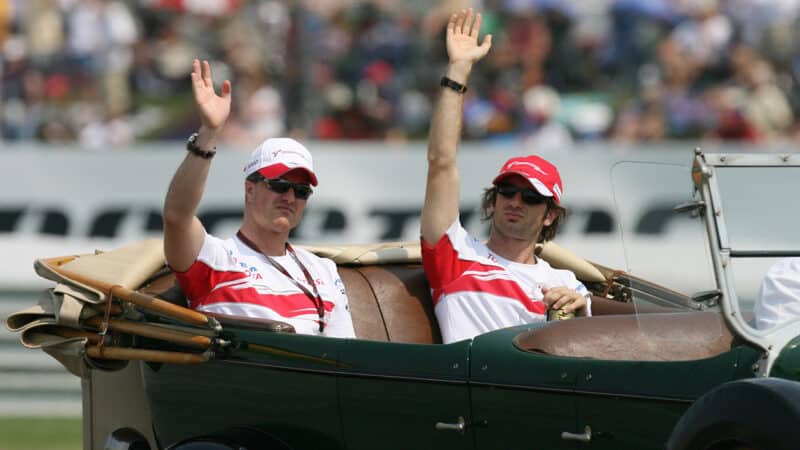
No smiles from Schumacher: Ralf maintains the grumpy appearance alongside Trulli during 2007 US GP drivers’ parade
Gabriel Bouys/AFP via Getty Images
I immediately regretted my outburst, but I guess it hardly matters now, 17 years later. Nonetheless, it felt like a big deal at the time. Apart from anything else, I feared that Toyota might lodge a formal complaint, and that as a result I might get the sack. Worryingly, my next task would be to re-enter Toyota’s hospitality unit to fetch Trulli. Wearily and warily, I trudged down the paddock – where, to my astonishment, I encountered Jarno, skipping towards me, all smiles, having heard Ralf’s version of the contretemps, and eager to hear it all over again from me. I gave him chapter and verse and, not that text-message initialisms were in vogue in those days in quite the same way as they are now, he almost literally ROFL’d; he certainly LOL’d long and hard. As things panned out, no-one at Toyota complained, either. The truth was that, not only slower but also moanier than his team-mate, Schumi Jr was not popular with many in the team by that time.
He duly retired from F1 at the end of the 2007 season – but Jarno went on until 2011. Somehow he and I had bonded over the rumpus at Indy in 2007, for he asked me to repeat the story to his manager Lucio Cavuto at Magny-Cours two weeks later, and after that he and I dined together a few times in London, and once in Rome, always at Italian fine-dining restaurants, invariably sharing a bottle of good vino rosso, for he had become something of a wine buff. Indeed, he is now the co-owner of a vineyard in Abruzzo, near the Adriatic coast of Italy.
I always found him to be very polite and unusually thoughtful. He appeared to enjoy being interviewed, and even grilled, which attractive trait was not and is not shared by the vast majority of F1 drivers. If you bowled him a tricky googly of a question, he would pause, ponder, then launch into a long, softly spoken, but cleverly nuanced reply, his brow furrowed and his hands expressive. When he did that, he used to remind me of Ayrton Senna, and indeed their faces are not unalike.
I am no longer in touch with him, but I would like to be. Perhaps I will drop him a line some time soon. I think our last email exchange was in 2019, when I was communications director of W Series and he wrote to me, criticising it, on the grounds that he thought women should compete on level terms with men, not in a segregated championship. It is an interesting point. I would love to debate it with him – over a bottle or two of Jarno Trulli Rosso Colline Pescaresi perhaps.
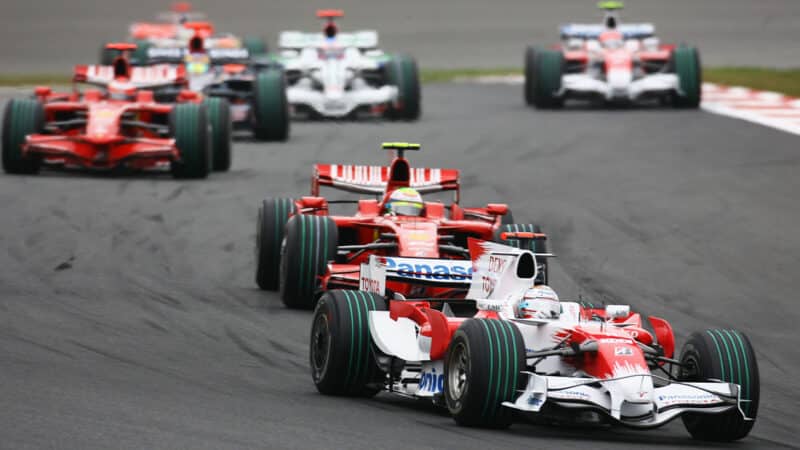
The Trulli train in Japan 2008 — it was often a result of his qualifying pace
Getty Images

